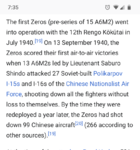(as just one example, the factory making the original version of the Yak-3 was destroyed delaying that project by a couple of years, which is a small but fairly substantial Axis Strategic victory I would say).
Sorry, it's just me nitpicking as usual.
This is probably about the factory 292 in Saratov which was destroyed in June 1943 during the operation Carmen II.
Since the first Yak-1M(future Yak-3) prototype rolled out in February 1943 and the factory managed to restore its pre-bombing output rate in October, we can assume that Yak-3 program was delayed by 4 months at least. There was also Tbilisi factory but I don't know if that one was involved in 1943.
Nevertheless, your example is very good and valid since those bombing raids in May-June 1943 have done considerable damage to the Soviet industry and logistics. Real strategic victory for Luftwaffe, indeed.

